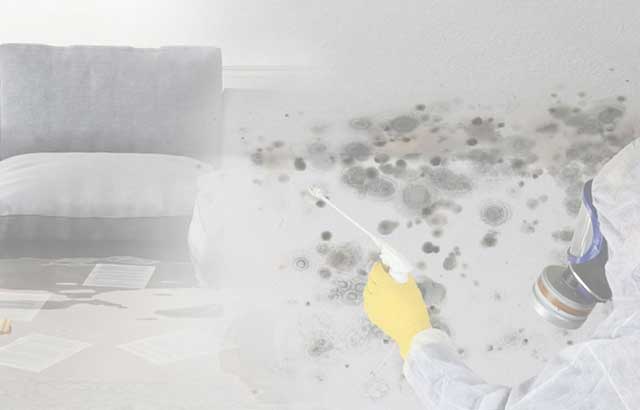Were you trying to find insight concerning Preventing Water Damage in the Bathroom?

The shower room is very susceptible for moist accumulation and also possible water damages because of the frequent use of water in it. This write-up supplies basic evaluation techniques to help detecting water damages risks.
The frequent use of water in the bathroom makes it exceptionally prone for damp accumulation and possible water damages. By examining it routinely, you can reduce water relevant damages.
The following collection of assessments is simple to perform and also must be done when in every 3 months in order to maintain your restroom in good shape and also to avoid potential water problems triggered by the bathtub, the shower, pipeline joints and plumbing, sinks, cupboards, as well as the toilet
Do not forget doing these inspections and be thorough while executing them. Bear in mind that these straightforward assessments can conserve you a lot of money by supplying early signs for water damage
Bath tub as well as Shower
The shower and tub require unique focus and upkeep. Check the floor tiles and also replace if cracked. Make certain that there is no missing cement between the ceramic tiles. Inspect and also change fractured caulking at joints where the wall surfaces meet the floor or the bath tub. Clogged drains pipes and also pipes issues will certainly prevent the tub from drying out as well as might indicate significant problems below the bath tub. Talk to a specialist promptly to prevent structural damages. Focus on discolorations or soft areas around the bath tub walls as they may suggest an internal leak.
Plumbing
Signs for water damages are tough to detect considering that a lot of pipes are set up inside the wall surfaces.
Pay unique focus to flooring as well as wall surfaces moisture and spots as they might show an unnoticeable plumbing issue. Examine dampness degrees in adjacent areas also.
Sinks as well as Cabinets
Sinks and also cabinets are exposed to wetness and also moisture daily and are frequently neglected. Check regularly under the sink and on the counter top above it. Fix any kind of drip in the catch as it might recommend drainpipe problems. Take a look around the sink, slow draining pipes may suggest a blocked drain. Replace sink seals if they are broken or loose.
The Toilet
The toilet is a susceptible water junction. Inspect the water lines as well as look for leakages around the bathroom seat, in the pipe, and also under the water container. If you find any kind of indicators of dampness on the flooring around the commode, look for leakages in the toilet edge as well as storage tank seals.
Know that hanging bathroom dish antiperspirants boosts the opportunities for obstructions.
How to Prevent Water Damage in Your Bathroom?
Water damage repair is an expensive, meticulous, and lengthy process. Unfortunately, bathrooms are the most susceptible rooms to water damage due to toilets, showers, and sinks. Pipes and fixtures wear out over time and are not immune to damage. But all is not lost, as there are ways to prevent water damage from occurring in your bathroom.
Check Your Plumbing
Nothing lasts forever, especially pipes, which can rust and begin leaking over time. You should periodically conduct pipe inspections and pay attention for any musty smells or water stains that may indicate you need water damage repair. Here are some things to check:
Frequently test valves for your toilet, shower, and sink to ensure they are properly working. Check faucet supply lines hidden under vanities and replace when needed. Replace cracked or deteriorating caulking along sinks, tubs, and showers. If you notice a clog in your sink, call in a professional. Since you can’t check the pipes in the wall, keep an eye out for stains, drywall bubbling, musty smells, and excess moisture; if the bathroom is on a second level, check the ceiling of the room directly below for these signs. Don’t Overwork Your Toilet
One of the most common reasons bathrooms need water damage repair is due to overflowing toilets. Save yourself the hassle of cleanup by being mindful and not pushing your toilet to extreme limits. If you have young children, it is especially important to keep an eye on them when they are in the bathroom and to teach them how to avoid clogging the toilet. Here are some more tips to help prevent your toilet from overflowing:
If you have a septic tank, only use septic-safe toilet paper Do not flush anything down the toilet besides toilet paper; items like diapers and sanitary napkins will clog the piping Pay attention to your toilet’s water level: If it’s low, it could mean it is partially clogged or that there is a crack in the toilet bowl Maintain Your Shower/Tub
Replace showers or tubs with cracks or other damage; even hairline cracks can allow water to seep in and cause damage. Grout and caulk help prevent water from seeping into walls and floors, so repair them if they are chipped, cracked, or deteriorating. Replace torn shower curtains or shower doors with seals that no longer work. Dry the floor and drain water from the tub immediately after use to prevent damage from sitting water. https://www.alure.com/home-improvements-blog/resources/how-to-prevent-water-damage-in-your-bathroom

Hopefully you enjoyed reading our post on How to Prevent Bathroom Water Damage. Thanks for taking a few minutes to read through our piece of content. Sharing is good. You won't know, you may be helping someone out. Thanks for your time. Don't forget to check up our site back soon.
Click On This Link